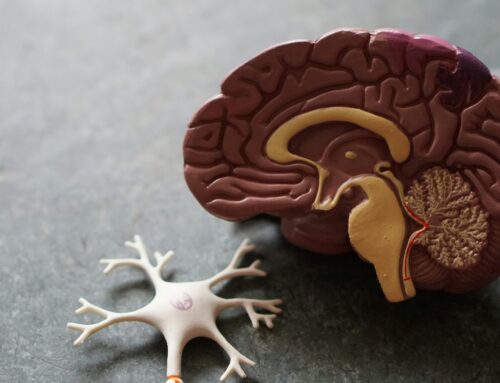Hand Injuries: Anatomy, Impact of Loss of Finger Fine Motor Skills, and Remedies through Physiotherapy
Hand injuries are a common cause of limitations in daily life and can therefore significantly impair quality of life. Particularly, the loss of fine motor skills in the fingers has far-reaching consequences, because our hands are essential tools for a variety of tasks. This essay explores the anatomy of the hand, different types of hand injuries, the impact of the loss of fine motor skills, and remedies through physiotherapy.
Anatomy of the Hand
The human hand is a complex structure comprising 27 bones, numerous muscles, tendons, ligaments, and nerves. The key structures include:
- Bones: The hand consists of the carpal bones (carpus), metacarpal bones (metacarpus), and phalanges (finger bones). The carpal bones form the wrist and consist of eight small bones arranged in two rows. The metacarpal bones connect the wrist to the fingers, and the fingers consist of three bones each (proximal, medial, and distal), except the thumb, which has only two bones.
Muscles and Tendons: The muscles of the hand are divided into intrinsic and extrinsic muscles. The intrinsic muscles are located within the hand and control fine finger movements, while the extrinsic muscles are located in the forearm, and their tendons extend into the hand to enable force transmission. - Ligaments: Ligaments connect bones and provide stability to the hand’s joints.
- Nerves: Three main nerves supply the hand – the median nerve, ulnar nerve, and radial nerve. They control muscle movements and hand sensitivity.
- Blood Vessels: Arteries and veins supply blood to the hand, facilitating the exchange of oxygen and nutrients.
Types of Hand Injuries
Hand injuries can vary widely and affect different structures of the hand, including:
- Bone fractures:
- Finger fractures: These can be caused by direct blows, falls, or crushing injuries. Common symptoms include pain, swelling, bruising, and limited mobility.
- Metacarpal fractures: Affect the metacarpal bones and can result from blows, falls, or crush injuries. Symptoms are similar to those of finger fractures.
- Wrist fractures: The most common type is the distal radius fracture, caused by falls on an outstretched hand. Symptoms include pain, swelling, and deformity of the wrist.
- Tendon injuries:
- Flexor tendon injuries: These tendons run along the palm and allow the fingers to bend. Injuries often occur from cuts or crush injuries.
- Extensor tendon injuries: These tendons run along the back of the hand and allow the fingers to straighten. Injuries can be caused by cuts or direct blows.
-
Nerve injuries:
- Median nerve injuries: This nerve runs through the carpal tunnel and supplies the thumb, index finger, middle finger, and part of the ring finger. Injuries can occur from pressure, cuts, or fractures.
- Ulnar nerve injuries: This nerve runs along the inner side of the arm and supplies the little finger and part of the ring finger. Injuries can occur from pressure, falls, or cuts.
- Radial nerve injuries: This nerve runs along the outer side of the arm and supplies the back of the hand. Injuries often occur from pressure or direct blows.
- Ligament injuries:
- Ligament sprains: Overstretching of ligaments, often due to falls or twists.
- Ligament ruptures: Complete tears of the ligaments, usually caused by severe force.
- Soft tissue injuries:
- Cuts: Injuries to the skin and underlying tissue caused by sharp objects.
- Bruises: Injuries from pressure or blows that lead to bruising and swelling.
- Abrasion: Superficial skin injuries caused by friction.
- Burns:
- Thermal burns: Injuries caused by hot objects, liquids, or steam.
- Chemical burns: Injuries caused by aggressive chemicals.
What Are Fine Motor Skills and Why Are They Needed?
Fine motor skills refer to the ability to perform small and precise movements with the fingers and hands, so they are an essential part of human motor skills and involve coordinated movements enabled by the collaboration of muscles, nerves, and the brain. Fine motor skills are crucial for a variety of daily and specialized tasks. These include simple activities like picking up small objects, writing, buttoning clothes, and zipping zippers. Fine motor skills are also required for more complex tasks such as playing a musical instrument, drawing or painting, and performing precise manual work.
In the professional context, fine motor skills are especially important for occupations that require high precision and dexterity. For example, surgeons, dentists, watchmakers, and technicians need excellent fine motor skills to perform their work successfully. In rehabilitation and care, fine motor exercises play an important role in restoring hand function after injuries or illnesses. Fine motor skills significantly contribute to independence and quality of life by enabling individuals to effectively and independently manage a wide range of everyday tasks.
Impact of Loss of Finger Fine Motor Skills
The fine motor skills of the fingers are crucial for precise movements and the ability to perform complex tasks. Loss of this function can have significant effects:
- Limitation of gripping function:
- Daily activities: Difficulty holding and manipulating small objects like pens, cutlery, or tools.
- Professional activities: Restrictions in professions requiring precise handwork, such as surgeons, artists, or craftsmen.
- Impairment of dexterity:
- Fine motor tasks: Loss of ability to perform fine movements needed for activities like writing, typing, or playing musical instruments.
- Coordination: Difficulty with hand-eye coordination necessary for precise tasks.
- Reduced strength:
- Grip strength: Weakening of hand muscles, making everyday tasks, for example opening bottles or carrying bags more difficult.
- Finger strength: Reduced ability to push or pull with the fingers.
- Pain and stiffness:
- Chronic pain: Persistent pain that can be caused by scar tissue, swelling, or deformities.
- Movement restrictions: Stiffness and limited joint mobility that affect daily activities.
- Psychological stress:
- Loss of independence: Difficulty completing everyday tasks independently, leading to frustration and dependency.
- Emotional impact: Anxiety and depression due to limited abilities and loss of quality of life.
Physiotherapy as a Remedy
Physiotherapy, as a matter of fact, plays a central role in the rehabilitation of hand injuries and the restoration of fine motor skills in the fingers. Treatment includes various approaches:
- Manual therapy: Techniques to improve joint mobility, release adhesions, and mobilize scar tissue.
- Strengthening exercises: Specific exercises to strengthen the hand and forearm muscles to increase grip strength and endurance.
- Coordination and dexterity training: Exercises aimed at improving fine motor skills and hand-eye coordination. Examples include working with putty, beads, or special fine motor training devices.
- Pain relief: Use of modalities such as cold and heat therapy, electrotherapy, or ultrasound to reduce pain and inflammation.
- Ergonomic advice: Guidance on ergonomic work practices and tools to minimize hand strain and ensure optimal function.
- Active and passive mobilization: Exercises to restore joint mobility and prevent stiffness.
- Home program development: Individually tailored exercises that patients can perform at home to support rehabilitation and maintain progress.
Sample Exercises to Improve Fine Motor Skills
To improve the fine motor skills of the fingers after a hand injury, there are various exercises that can be performed both in physiotherapy and at home. These exercises basically aim to strengthen the dexterity, strength, and coordination of the fingers. Here are a few sample exercises that can be easily done at home:
- Putty exercises: Putty is a versatile tool for improving hand strength and finger coordination. Squeeze and knead the putty, shape it into various forms (balls, sausages, disks). Push small objects (like beads or buttons) into the putty and remove them again.
- Bead stringing: This exercise promotes precision and finger coordination. String small beads onto a thin thread. Vary the size of the beads to increase the difficulty.
- Tweezers exercises: These exercises strengthen finger strength and grip precision. Use tweezers to move small objects (such as beans, peas, or coins) from one container to another.
- Rubber band exercises: Rubber bands are useful for increasing finger strength and flexibility. Place a rubber band around all five fingers and spread the fingers against the resistance of the rubber band. Wrap a rubber band around one finger and bend it against the resistance of the rubber band.
-
Stacking coins:
This exercise improves dexterity and finger precision. Stack coins on top of each other without the stack tipping over. Vary the number of coins to adjust the difficulty.
- Buttoning and zippering exercises: These exercises simulate everyday tasks and improve fine motor skills. Practice buttoning and unbuttoning buttons and zipping and unzipping zippers on clothing.
- Tearing paper: This exercise strengthens finger strength and flexibility. Tear paper into small strips and vary the thickness of the paper to change the resistance.
- Pen and writing exercises: These exercises improve finger dexterity and hand-eye coordination. Use crayons or markers to draw pictures or shapes. Write letters, words, or sentences with various pens to improve fine motor skills and writing abilities.
- Clothespin exercises: Clothespins offer resistance that increases finger strength, so generally clip clothespins onto the edge of a container or a string and remove them again.
- Puzzles and building blocks: These activities promote problem-solving skills and hand-eye coordination. Use puzzles with small pieces to improve fine motor skills. Stack small building blocks to promote dexterity and precision.
Conclusion
Hand injuries and the loss of fine motor skills in the fingers can significantly impact quality of life. Targeted physiotherapeutic measures can largely restore hand function and improve quality of life. Early and consistent therapy is crucial to achieve optimal results and avoid long-term limitations. Physiotherapy offers a variety of techniques and exercises that are individually tailored to the patient to achieve the best possible rehabilitation. Regular practice is essential to make progress and restore hand function.







Leave A Comment